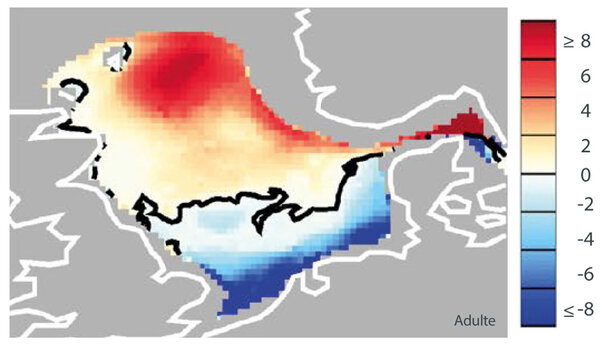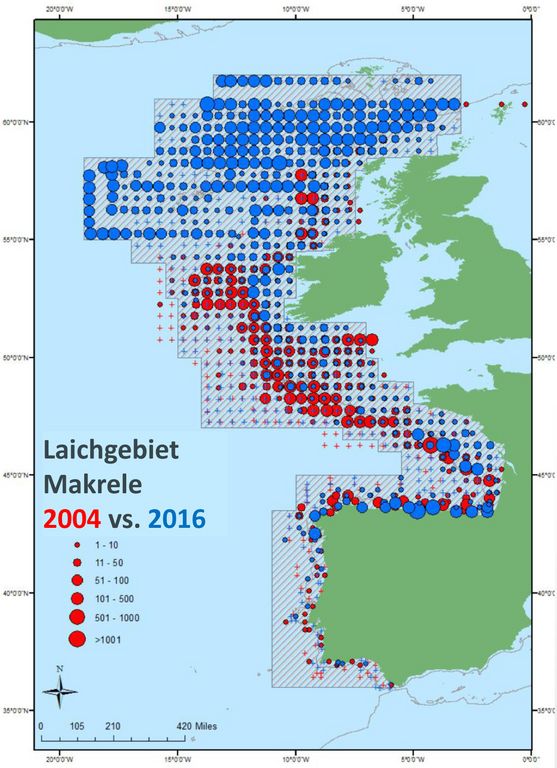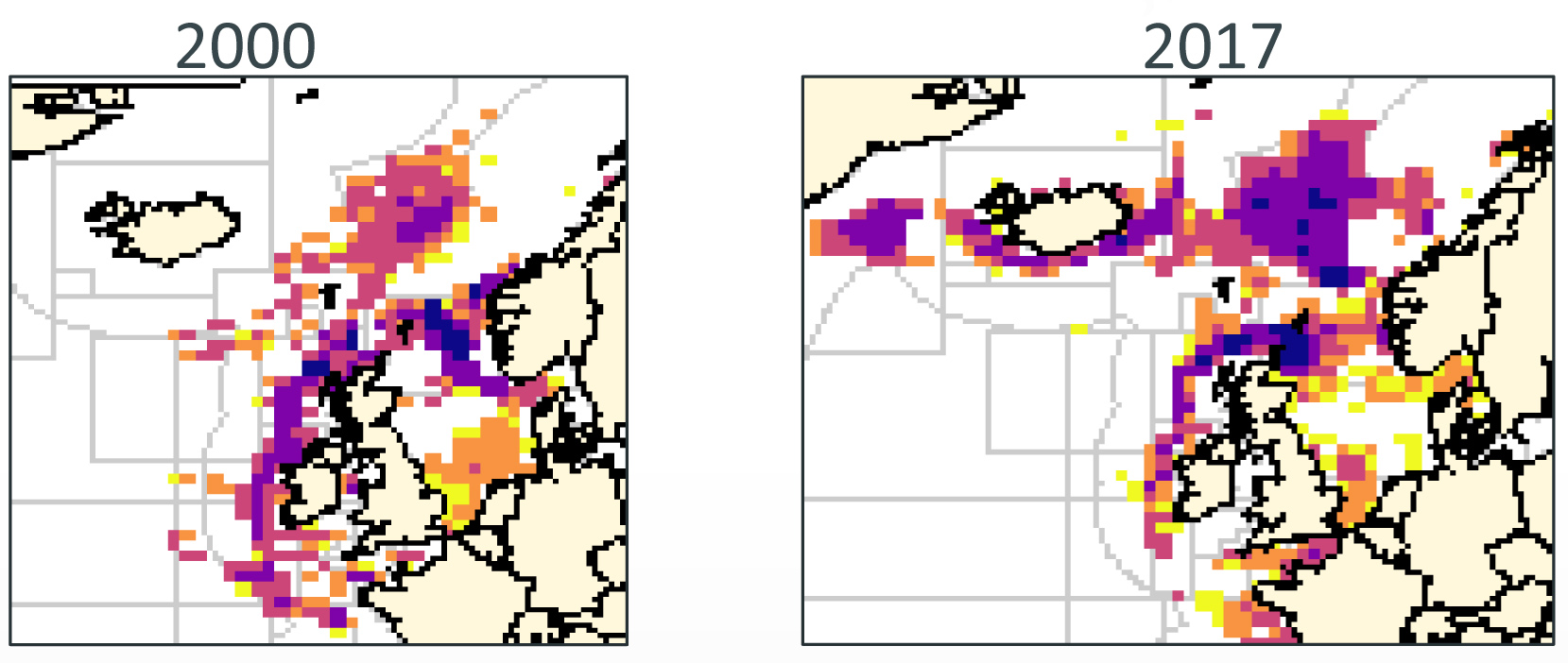Expertise
Climate change: some come, some go
Climate change has arrived in European seas such as the North Sea and the Baltic Sea in a noticeable and measurable way. Environmental conditions are changing rapidly. As a result, ecosystems and fish stocks are changing in their composition and performance.
Temperatures in the shallow, southern North Sea are rising twice as fast as the global average in the oceans. 2014 and 2018 were the two warmest years on record, with surface temperatures exceeding 16 °C in July. As a result, habitat and ecosystems are changing at unanticipated rates.
For cod, the thermal suitability of the southern North Sea as a habitat has decreased massively over the last 50 years (blue; see figure), while it has initially become even more favorable in the northern North Sea (red) (see following paper).
In addition to water temperature, sea floor habitats also play an important role: Rockfills are changing the original sand-dominated habitats for cod around the increasing number of North Sea wind farms. This is accompanied by an increase in benthic biomass and changes in the associated biotic communities that form the food base for cod. We were able to show that cod use the new wind farm habitat as a protected spawning and refuge site and benefit from the richer food mix found there. Possibly, this increases its resistance to overexploitation and climate stress. Further information can be found in the publication Thünen à la carte 7 (in German).
Pelagic fish species react even more strongly to the changed environmental conditions than the various demersal fish species. For example, the spawning grounds of mackerel have shifted hundreds of kilometers northward. Whereas 10 years ago they stretched in a broad strip from the Bay of Biscay to the west of Ireland, today they extend much further north into the Atlantic to the high ground between Scotland and Iceland (figure at left). Accordingly, mackerel catches have also shifted northward over the past 15 years (figure below).
Southern species migrate
As cold-loving species retreat northward, species from warmer areas move in. Based on long-term observations, we were able to prove that southern fish species such as sardine, anchovy, striped mullet or red gurnard are increasingly establishing and spreading in the North Sea. Another example is the stock of the northern hake. Its spawning biomass is growing rapidly and has increased by a factor of 8 since 2008. The stock, whose main range traditionally extended from the Iberian shelf to the Irish Sea, has expanded massively into the northern North Sea. The problem is: only 4% of the total catch quota is allocated to the North Sea, but more than 30% of the stock biomass is now found in this region. This clearly shows that we need a redistribution of fishing quotas in European waters in the medium term that takes into account the rapidly changing species composition and fishing opportunities.
In addition to fish species, squid also benefit disproportionately from climate change. Scientists from the Thünen Institutes of Baltic Sea Fisheries and Sea Fisheries showed that the squid Illex coindetii is now firmly established in the North Sea (see following paper). Catch statistics indicate that fisheries exploitation of the new resource is also becoming established. However, sustainable management concepts for these species are still lacking. There is a need for action here.
Problems in the Baltic Sea
Climate change is also having an effect on fish stocks in the Baltic Sea. Unlike in the North Sea, the Baltic Sea is bounded to the north by Scandinavia and fish stocks cannot escape from climate stress by northward migration. However, changing distribution areas is not always a solution, as the example of the Baltic herring shows: The economically important herring stock of the western Baltic Sea has been producing fewer and fewer offspring for years – despite drastic restrictions on fishing. Extensive analyses have shown that the herring larvae hatch earlier in the year due to warmer winter water temperatures. At the new time of hatch, however, the density of their zooplankton prey ist still low, since the timing of the plankton spring bloom is mainly controlled by the position of the sun and the length of the day.
Challenges for policy and fisheries management
To summarize: In the North Sea, the composition of fish species is changing. Cold-adapted species are increasingly migrating northward, while warm-adapted species are expanding. In the largely closed Baltic Sea, cold-adapted fish species are facing massive problems and stock productivity is declining. Both have implications for the composition of fishermen's catches. Fisheries policy and management must take this into account and adapt fishing opportunities to the changed conditions.




![[Translate to English:] Logo des Bundesministerium für Ernährung und Landwirtschaft](/media/allgemein/logos/BMEL_Logo.svg)